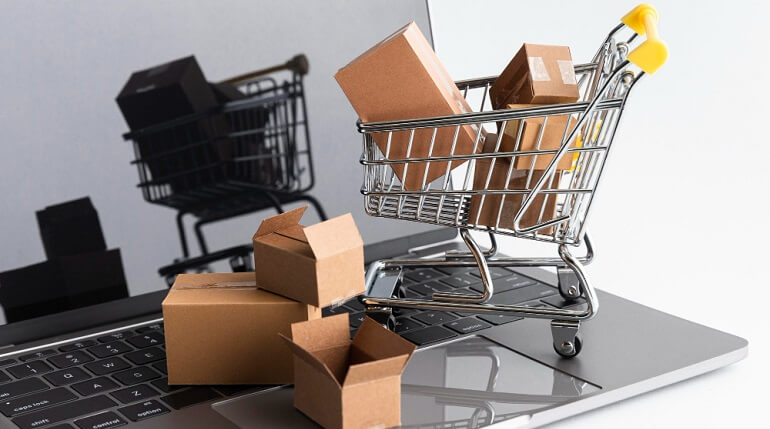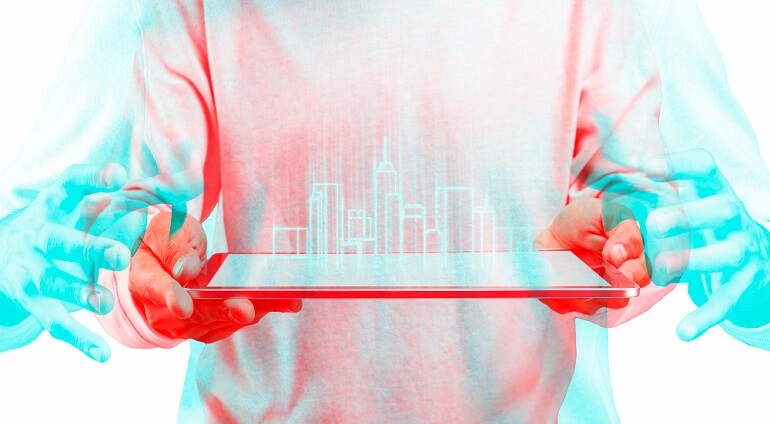The e-commerce industry has grown quickly recently and doesn’t seem to be slowing down. As a result of technology advancements, online shopping has become increasingly important in people’s daily lives because it makes it simple for them to make purchases from the comfort of their homes. As 2023 approaches, a number of technology developments in electronic commerce are anticipated to fundamentally alter the industry.
Virtual reality (VR) and augmented reality (AR)
The use of virtual reality and augmented reality technologies in e-commerce may significantly increase in 2023, despite the fact that they have been present for a while. AR and VR provide a fun buying experience by letting customers view items in a virtual environment. Retailers can create virtual showrooms using these technologies so that customers can examine and interact with products in a three-dimensional environment. By utilising AR and VR to create virtual try-on experiences, customers may virtually try on garments and accessories. By utilising these technologies, it is possible to increase both the quantity of returns and customer contacts.
Artificial Intelligence
Artificial intelligence is a different technological development that is anticipated to transform online purchasing this year. AI can be used to improve customer experience by providing tailored recommendations based on a customer’s browsing and purchasing history. AI can automate a number of aspects of e-commerce, including customer service and inventory control. Retailers can use AI to optimise their pricing strategy and offer dynamic pricing, which adjusts product prices in response to supply and demand. With the use of these skills, shops may be able to reduce costs, increase production, and enhance customer service.
3D Technology
Electronic commerce faces enormous challenges in providing customers with an accurate picture of the products. As a result, in 2023 it is probable that the use of three-dimensional technology to create an efficient 3D model viewer will increase. With the use of these viewers, customers will be able to zoom in and out, spin, and view products from different angles, providing them with a realistic representation of the goods. This technology will help consumers make more educated decisions, which will result in fewer product returns. These model viewers can also help businesses increase their conversion rates and customer satisfaction.
Voice Assistants and Chatbots
Due to their rising popularity in the market, more online stores are probably going to start adopting chatbots and voice assistants during the year. Chatbots are a quick, personalised way for customers to get answers to their questions. Visitors can use voice commands to communicate with voice assistants that will aid them in ordering or navigating a website. Through chatbots and voice assistants, users can get product recommendations, alerts about sales and promotions, and other information. With the use of these technologies, customer care staff workloads can be greatly reduced and merchants’ capacity to provide round-the-clock customer support boosted.
Mobile Business
In light of the progressive growth of mobile commerce in recent years, more stores ought to begin implementing mobile-first strategies. The bulk of online purchases are made on mobile devices, thus retailers must ensure that their websites are responsive and mobile-friendly. Merchants will increasingly utilise mobile commerce technologies like Progressive Web Apps (PWA) and Accelerated Mobile Pages (AMP). Thanks to PWAs’ seamless mobile experience, customers can browse and make purchases even when they’re not connected to the internet. Thanks to AMPs, mobile web pages load more quickly, improving the customer experience and reducing the chance that customers may abandon their shopping carts. As mobile commerce develops, retailers who invest in mobile-friendly solutions will be at a competitive advantage.
Blockchain technology and cryptocurrencies
Due to their growing popularity in recent years, we may expect to witness an increase in the use of cryptocurrencies and blockchain technology in e-commerce in 2023. Customers can use cryptocurrencies to make payments, which provides a more private and secure way of conducting business. Blockchain technology allows for the tracking of the entire product supply chain, from the manufacturer to the consumer. This technology can help companies ensure the authenticity of their items by reducing the possibility of counterfeit goods. Additionally, both businesses and customers may benefit from increased transparency and confidence as a result of the use of these technologies.
In conclusion, the e-commerce industry is always evolving, and in 2023, we may expect a number of technical breakthroughs that will fundamentally alter this sector. The technologies listed above will give retailers a competitive edge, enhancing customer shopping experiences while increasing efficiency and profitability.



